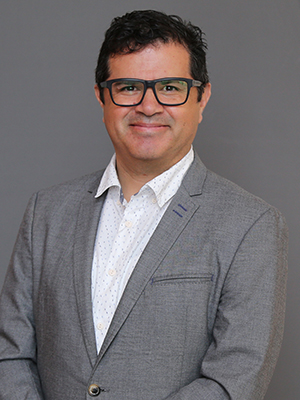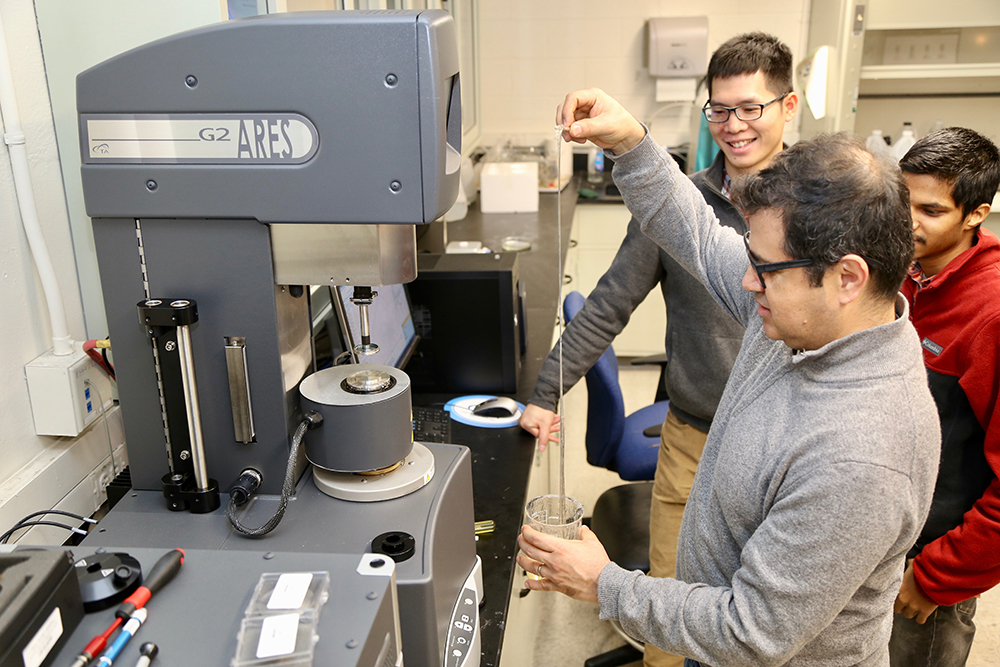Unmasking fluid mechanics
Brown Professor of Engineering Roberto Zenit believes in the importance of understanding and predicting fluid behavior.
 An ardent believer that fluid mechanics is of fundamental importance for both engineering and applied science, one of the newest engineering professors on campus is an avid supporter of both empirical learning and wide exposure to the subject matter. “I find that most students don’t know what fluid mechanics is until they take a class,” he said. “ but one of my goals is to make people more aware of the importance of this subject.”
An ardent believer that fluid mechanics is of fundamental importance for both engineering and applied science, one of the newest engineering professors on campus is an avid supporter of both empirical learning and wide exposure to the subject matter. “I find that most students don’t know what fluid mechanics is until they take a class,” he said. “ but one of my goals is to make people more aware of the importance of this subject.”
Zenit sees himself in the majority of undergrads. When he stepped on campus at the Universidad Nacional Autonoma de Mexico (UNAM), he considered studying physics, but wondered, “what would I do as a physicist?” He decided some type of engineering made sense, but had no idea the study of fluids existed. He wandered into the classroom of Baltasar Mena, a professor who had completed his Ph.D. at Brown and had been teaching at UNAM since 1975. “He is the reason I became a scientist in fluid mechanics. Taking his class was a huge discovery for me. I would continue in the subject, then do research with him, and he helped me decide what to do after that, which for me was the graduate degree.”
Zenit went on to earn his master’s (1993) and Ph.D. (1997) from the California Institute of Technology. In the fall of 2019, he accepted a position as Professor of Engineering at Brown.
He describes himself as primarily an experimentalist, conducting lab trials to gain insight into how fluids interact with devices, with the atmosphere, and within living beings. “Fluids are everywhere,” he said. “Whether it is electricity, our blood pumping, or the climate — it has to do with fluids. And as engineers, our job is to predict things. We want the system to work exactly as we designed it to work.”
Fluids are everywhere. Whether it is electricity, our blood pumping, or the climate — it has to do with fluids. And as engineers, our job is to predict things. We want the system to work exactly as we designed it to work.
Zenit sorts his current research into three areas: biological fluid mechanics, two-phase flows, and the analysis of artistic painting.
Alongside Brown colleagues Kenny Breuer and Tom Powers, Zenit will look to complement the work these two have done with microorganism motility in biological fluid mechanics. Zenit, too, has studied location dynamics of microorganisms in complex fluids, and his interests lie in the flow-structure interaction of biological heart valve prostheses. As in many cases of biological importance, many of the surrounding fluids are strongly non-Newtonian, challenging the most fundamental intuition in fluid mechanics, and resulting in difficulty predicting the implications in biological cell locomotion.
Zenit’s work with two-phase flows has given him an opening to talk about physics in the beverage industry. He co-wrote a paper (“The fluid mechanics of bubbly drinks”) which appeared in Physics Today in 2018, in which he discusses the physics in the drinks’ two-phase flows. Zenit enjoyed this excuse to talk about the co-existence of gases and liquids in soda pop and beer, explaining the tingly sensation that is of peculiar interest to humans.
 Beyond the physics of fizzy drinks, he intends to pursue projects with industry to study aspects of these flows. In the case of granular flows, the complexity in determining the behavior of these flows arises from the inelastic and frictional contacts among particles. Zenit believes there is wide practical interest and funding opportunities in the fundamental nature of industrial flows, due to their prevalence in many modern engineering applications.
Beyond the physics of fizzy drinks, he intends to pursue projects with industry to study aspects of these flows. In the case of granular flows, the complexity in determining the behavior of these flows arises from the inelastic and frictional contacts among particles. Zenit believes there is wide practical interest and funding opportunities in the fundamental nature of industrial flows, due to their prevalence in many modern engineering applications.
The newest subject Zenit has taken on has been the analysis of artistic painting. “Painting is a fluid mechanical process,” he said. “The action of covering a solid surface with a layer of viscous fluid is one of the most common human activities, and this process has been vastly studied. In the case of artistic painting, the objective is different. Painters learn how to manipulate the deposit onto the canvas to create something of aesthetic value.”
He says the initial motivation for him was curiosity, his interest piqued when an art historian contacted him about the possibility of reproducing the pattern formation in the work of muralist David Alfaro Siqueiros. Zenit began exploring how the densities of different paint colors impacted the texture, replicating the patterns formed. What he ultimately found was an implication to other things: Similar flows that were unexpectedly related, including the flow of water permeating the ground. “I never forget that what I’m doing should be useful to someone, at some point,” Zenit said.
He has become quite the expert of Jackson Pollock's pouring technique, which results from carefully depositing unbroken straight visocous filaments onto a horizontal canvas. Pollock learned to control this deposition process. Zenit’s research explains how he reached this point of controlled execution.
“One of the things I have come to realize is that painters have a deep understanding of fluid mechanics as they manipulate their materials,” he said. “This is what fluid mechanicians do. The objective is different, but the manipulation of these materials that flow is the same. It is not a surprise that fluid mechanics has a lot to say about how artists paint.”
Born in Mexico City and having spent more than 20 years of his academic life at the largest University in that country, Zenit is enjoying the transition to Providence and College Hill.